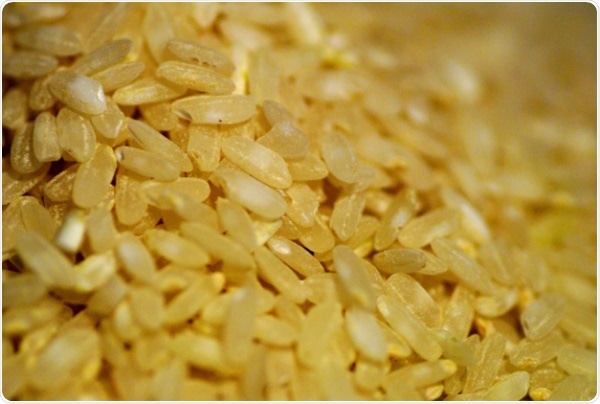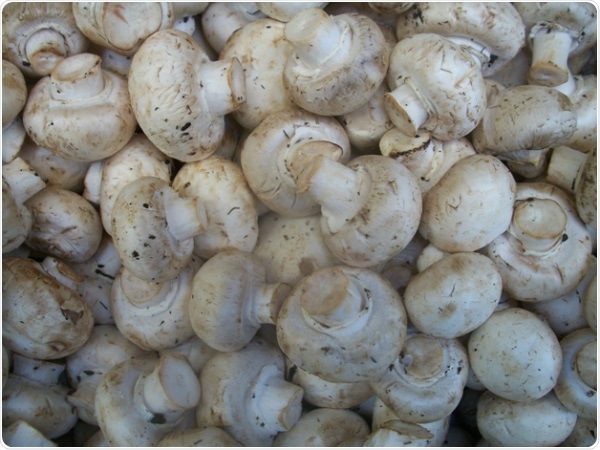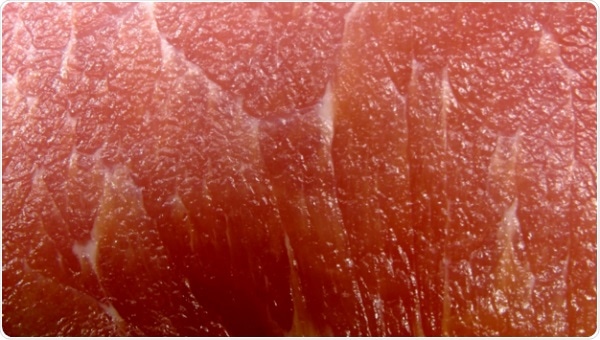Over recent decades, biotechnology has delivered unbelievable breakthroughs which have significantly improved our lives. The advances made in biotechnology have included personalized genetic testing, low-cost insulin, and bioluminescent transgenic fish, promising brilliant possibilities in the future.
Unsurprisingly, these technological developments have had an impact on the food we eat and doubtless will continue to shape the future of food. Although the world is still working out the regulations and legislation to be put in place regarding GMOs and bioengineered additives, these products and companies constitute significant examples of ways in which these technologies are able to impact how we eat.
Flavr Savr Tomato
The first genetically modified organism (GMO) product which was approved for commercialization by the FDA was the Flavr Savr tomato. By interfering with the natural softening of the tomato, scientists at the Calgene Company were able to inhibit the ripening process in 1994. They were able to grow tomatoes which had significantly longer shelf-lives than the conventional types which were currently on the market by using an antisense gene to block the production of an enzyme which is involved in the process of cell wall breakdown.
Initially, these Flavr Savr tomatoes were a big hit with consumers, however, a number of challenges – including a public backlash against genetic engineering being used in food – led to a poor market performance. After the Calgene Company was acquired by Monsanto, the Flavr Savr tomato product was shelved.
The Golden Rice Project
Golden rice began to be developed in the early 1990s. It is a genetically-enhanced rice which is used to tackle the increasingly challenging issue of vitamin A deficiency in children. This type of malnutrition affects 140 million children. Conventional cultivars of rice are able to synthesize the beta-carotene (which is a precursor to vitamin A) in its leaves.
However, those genes are not naturally expressed in the rice grain itself. Three biosynthesis genes were introduced into the rice plant in order to allow it to synthesize beta-carotene in the edible endosperm. This created a biofortified rice which had a golden hue.
A research team at Syngenta released a high-yielding golden rice strain in 2005 which contained 23 times as much beta-carotene as the first variant of golden rice. Other staple crops, such as bananas and sorghum, have been transformed using the same method. Due to limited evidence of bioefficacy in undernourished children, golden rice is yet to be fully deployed in any country. However, in 2017 the International Rice Research Institute recently applied for biosafety permits to allow them to continue studying golden rice for potential use in the Philippines.

Evolva
The chemical which is mainly responsible for vanilla’s aroma is Vanillin. For over a century, this has been a significant commodity flavor. Wood pulp byproducts or petrochemical feedstocks are traditionally used to produce vanilla flavorings for use in food. They are usually made synthetically as natural vanilla which is produced from seed pods has issues with volatile supply and high costs.
In order to develop a way of producing the flavor molecule via fermentation, in 2011 the Swiss company Evolva worked together with International Flavors and Fragrances. This would be achieved by biohacking the genome of baker’s yeast and forcing the microbe to churn out vanillin using easily-available sugars as its primary source of food. While this process certainly isn’t cheap, it is permissible to label the vanillin produces as natural as it isn’t synthesized directly from chemicals, and is able to be manufactured sustainably at a large scale.
Impossible Foods
Dr. Patrick Brown, a professor at Stanford University, perceived an opportunity to revolutionize the food industry. His idea was to introduce flavorful substitutes for meat products which were made entirely from sustainable plant materials. After realizing that an important component of meat flavor which is absent from many vegetarian meat substitutes was the flavor of blood, he managed to replicate this flavor using an iron-containing heme protein which is found in soybeans. In 2011, he founded Impossible Foods as a medium through which he could commercialize alternative meat products which had a flavor truly resembling meat.
Known as leghemoglobin, the heme protein is structurally related to the hemoglobin which is found in the blood cells of humans and animals. He and his fledgling team realized that it would be commercially impossible to extract leghemoglobin as a result of the low concentrations naturally occurring in soybean roots. Yet it would be possible to grow the blood-flavored substitute in fermentation vats by incorporating the synthesis genes in yeasts.
This has allowed the company to scale up their production processes successfully. While Impossible Foods continues in its quest to replace, one restaurant at a time, the country’s burgers with their plant-based patties, these transgenic yeasts will remain an important source of their ‘secret sauce’.
While Impossible Foods marches on to replace burgers across the country with their plant-based patties, one restaurant at a time, these transgenic yeasts will continue to be an important source of their ‘secret sauce’.
Anti-Browning White Button Mushrooms
Used across the globe in industrial and academic research circles alike, CRISPR is the brand new gene-editing breakthrough. At Pennsylvania State University recently, CRISPR technology was used to modify the genes responsible for making white button mushrooms turn brown. The polyphenol oxidase (PPO) present in wild types of mushroom causes browning when bruised or cut tissue is exposed to air. This results in an off-putting appearance.
The CRISPR method, however, is able to delete specific genes which code for the synthesis of PPO and reduce browning by 30% in the altered white button mushrooms. These mushrooms were able to avoid typical regulations which are reserved for GMO by the USDA, as CRISPR does not produce an organism containing foreign DNA. Consequently, endless possibilities for the gene-editing of plant foods without the kind of restrictions enforced on other GMO products are opened up by this method.

Ginkgo Bioworks
Based in Boston, Ginkgo Bioworks (also known as “The Organism Company”) is a startup which is covering new territory in the expanding area of food biotech. Their remit is to produce important commodity chemicals used for foods, fragrances, and flavors via the fermentation process. Via a combination of robotic automation and genetic engineering, the Ginkgo Bioworks team constructs designer yeasts. They are consequently able to create and screen through thousands of genetically-modified microbes, and subsequently, choose the candidates with the highest yields in order to produce flavorings at a commercial scale.
Once more, it is permissible to label these flavor compounds which are made from genetically-altered yeasts as natural, unlike synthetic flavors which have been produced from petrochemicals. This allows flavor companies to offer natural flavor products at a significantly reduced cost as compared to those which are extracted from crops. In an attempt to continue developing natural flavors, the company has current partnerships with major flavor companies Robertet, Ajinimoto, Kerry, and Amyris.
New Harvest
Synthetic biology isn’t only used for additives and flavors. The members of New Harvest dream of manufacturing completely sustainable meat products using only cells cultured in a petri dish, and shepherd in the field of cellular agriculture.
The New Harvest team uses the same technology to grow tissues and organs, which is used for biomedical purposes, and they are working on ways culturing animal cells into meat which is suitable for human consumption. New Harvest is supporting research on a variety of products via partnerships with academic groups across the globe.
These products include chicken, beef, turkey, pork, milk, and eggs. While some of these food materials have been grown successfully in a lab-scale petri dish, the significant challenge facing the industry is how to replace the expensive growth medium currently used with more sustainable and cheaper alternatives.

Edible CRISPR Probiotics
At the University of Wisconsin-Madison, food scientists have shown they are able to deliver CRISPR through food products in order to instruct antibiotic-resistant bacteria to die. Treatment-resistant Clostridium difficile is the cause of a variety of fatal intestinal infection which can spread rapidly in clinical and hospital environments.
The van Pijkeren lab is using a common bacterial probiotic as a living delivery device in pill form to develop a virus which selectively infects C. difficile with a CRISPR message. This message causes enzymatic cuts in the bacterial genome. Death in the bacteria is caused by these slices in the DNA. In relation to conventional antibiotics, the probiotic has the advantage of a selective ability to kill this type of bacteria only.
This leaves intact beneficial bacteria in the human host which will continue to serve as an immune barrier against different infectious bacteria. Although it is still at an early stage of development, this technology is promising as a tool which can potentially join the expanding arsenal opposing drug-resistant infections which continue to stretch the medical community’s resources.
In the long term, there is still controversy surrounding the overall benefits of genetic modification technology, including safety concerns about its effects on crop biodiversity, antibiotic-resistance gene transfer to harmful microorganisms, and biosynthesis of allergenic side-products. It seems clear, however, that biotechnology will remain a powerful tool in shaping our health and food far into the future.
Kolabtree
Kolabtree is the leading online marketplace for freelance scientists and researchers. Their global pool of 5,500+ freelance experts are typically PhD-qualified and are from institutions like MIT and Harvard University. Services offered include statistical analysis, scientific consulting, data analytics, scientific writing and literature search. Kolabtree has helped businesses around the world, including Volkswagen and Sage Publishing, access scientific expertise quickly and easily. The platform lets you choose a budget of your choice, and interact with freelancers before making a hire. It's free to post your requirement on the project and receive quotes from experts. Kolabtree’s freelancers have helped businesses develop a product, write a technical report, perform a data analysis, and more.
Kolabtree is a one-stop resource for entrepreneurs, businesses and research organizations to get quick help from experts at short notice.
Original piece written by Bryan Le. Bryan Le is currently a Science and Medicine Graduate Research Scholar and PhD student in the Department of Food Science at University of Wisconsin-Madison. Bryan holds an M.A. and B.Sc. in Chemistry from University of California, Irvine.
Sponsored Content Policy: News-Medical.net publishes articles and related content that may be derived from sources where we have existing commercial relationships, provided such content adds value to the core editorial ethos of News-Medical.Net which is to educate and inform site visitors interested in medical research, science, medical devices and treatments.